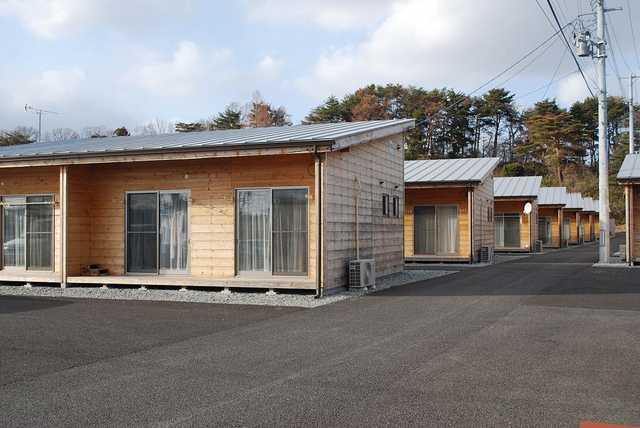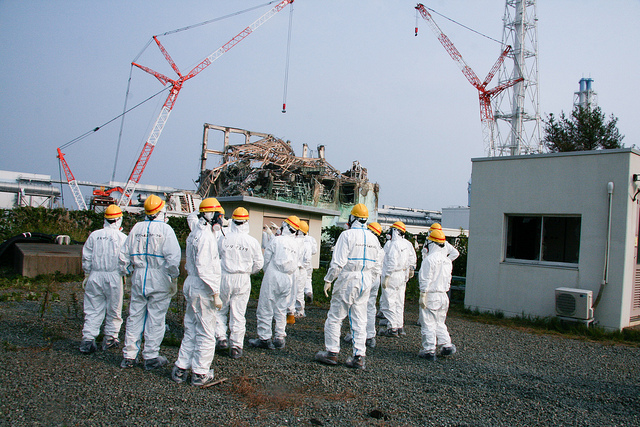On March 11, 2011, the Great Tohoku Earthquake started a chain of events in Fukushima Prefecture that culminated in the second largest nuclear power disaster since Chernobyl. TEPCO, the Tokyo Electric Power Company, was totally unprepared for the 13 meter (43 feet) tall tsunami wave which breached the sea walls at Fukushima Daiichi Nuclear Power Plant Disaster , flooding the generators and causing them to shut down. The generators could then not provide the needed coolant to the reactors, which overheated and had explosions, sending radiation into the atmosphere. Residents were evacuated, but the communication and handling of the crisis have been seriously criticized by industry professionals and watch groups throughout the world.
Today, the crisis seldom makes its way into international news, though it is frequently reported in the Japanese press. Many residents have returned to their homes, but other areas are still quarantined with restricted access.

Evacuee Center in Fukushima taken March, 2013 (photo: U.S.-Japan Council)
The stress and mental health of the people in the area is considered one of the greatest health risks, since many people anguish over unseen risks and whether it is truly safe to return.
Government reports claim that there is no problem, but TEPCO released a report saying that radioactive water is draining into the ocean, something outsiders have suspected for some time. Official reports that there is no health risk conflict with the facts that children being routinely screened in the area have a third greater rate of thyroid abnormalities than those in other areas of the country. As of November 2013, over 50 children have been reported with thyroid cancer, the most common form of cancer linked with radiation, but health officials say that there is no provable connection to the Daiichi Power Plant.

The IAEA International Remediation Expert Mission examines Reactor Unit 3 during the team’s visit today to TEPCO’s Fukushima Daiichi Nuclear Power plant (photo: IAEA Imagebank)
TEPCO continues to work on containing the radiation and resolving the problems caused by the crisis, but the immediate future looks grim. There is a 40-year plan in place for stopping the leakage of the contaminated water, but the facility will take much longer before it is safe to enter without special equipment.
